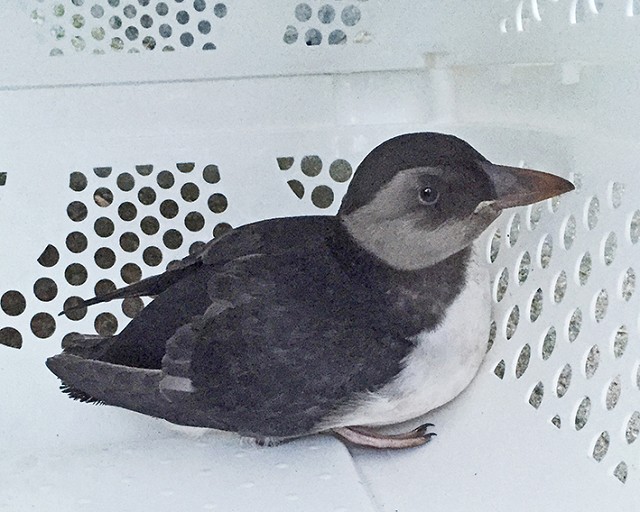Look out for Pufflings
The Scottish Seabird Centre is again urging East Lothian residents to keep an eye out for young Puffins after the first of the 2016 season was rescued from under an ice cream van in North Berwick on 28 July.
Found by centre member Mike Thornton, who nicknamed the Puffling 'Mr Whippy' in honour of where it was found, the youngster was safely caught and taken into the centre, where Discovery Centre Manager Alexander Turnbull was able to assist.
The conservation and education charity is now urging East Lothian residents to keep an eye out for young Puffins as Puffling season is well underway.
Mr Turnbull commented: "The Puffling was fine, though a little confused and scared. I waited until sunset before releasing it by the old pier just as high tide was spilling over onto the surface. It flew out of my hands and landed on the water a metre away from the pier, before diving a few times. It then started to paddle itself out towards the Lamb, looking quite happy and calm."

Found under an ice cream van, this young Puffin was successfully rescued and released out to sea (Photo: Alexander Turnball)
Puffins and their young are now leaving their burrows on the islands of Craigleith, Fidra and the Isle of May NNR, and heading out to sea. However, after leaving their burrows on the island of Craigleith, just offshore from North Berwick, some Pufflings become disorientated by lights from the mainland. Their first flight may see them heading into town and seeking somewhere dark to hide from predators, often underneath cars or in bushes.
To help raise awareness of this, North Berwick Wildlife Watch has created a video with award-winning photographer Barrie Williams. The film is a step-by-step guide showing what do to if you find a Puffling.
The Scottish Seabird Centre's Chief Executive Tom Brock OBE has appealed for everyone to be vigilant and to call the Scottish Seabird Centre on 01620 890202 or the Scottish SPCA on 03000 999 999 if they find a Puffling.
Mr Brock said: "Pufflings look completely different from their adult counterparts, so often people don't realise what they can see is a young Puffin! They are shades of grey, white and black; their smaller beaks don't have the characteristic bright colours that the adults have in summer.
"It is a crucial time in the Puffin season and we want to ensure as many as possible of these wonderful seabirds make it out to sea. We are appealing to people to please contact us if they do spot a Puffling."
For more information about the Scottish Seabird Centre please visit: www.seabird.org

